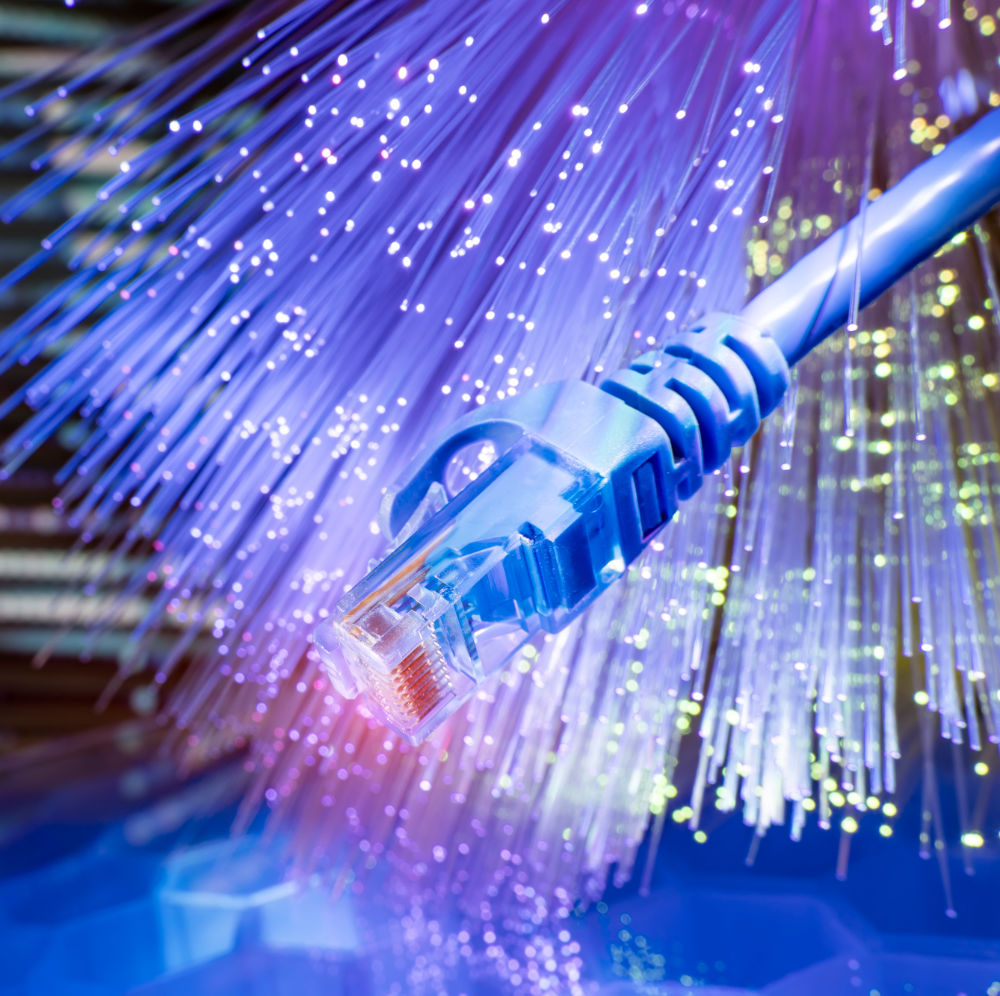Overview
Discover High-Speed Ethernet Solutions
Ethernet is a widely used networking technology for connecting computers and devices within a local area network (LAN). It employs a system of cables and switches to transmit data between devices at high speeds.
Developed in the 1970s, Ethernet has evolved into various standards, such as Ethernet over twisted pair cables (e.g., Cat5e, Cat6) and fiber optics. It operates on the principles of Carrier Sense Multiple Access with Collision Detection (CSMA/CD), allowing multiple devices to share the network efficiently. Ethernet’s versatility, reliability, and scalability make it a fundamental component of modern computer networks.

High Speed Internet Explained

Ethernet is a data transmission technology for wired networks and is the standard for transmitting data packages in local home or office networks (LAN, Local Area Network).
Within such a network, all connected electronic devices such as computers, printers and servers can communicate with one another via LAN cables.
Data is sent and received via Ethernet. Ethernet does not work wirelessly like WLAN, but rather is only wired. In networked industrial environments, wired Ethernet offers a significantly higher data transmission rate and reliable transmission stability than the alternative networking via WLAN (Wireless Local Area Network).
The American working group IEEE (Institute of Electrical and Electronics Engineers) has defined and standardised the Ethernet network protocol and the structure of its packages with the IEEE specification 802.3.
The Ethernet standard began in the 1970s. Back then, however, only a very low transmission rate was possible. Over the past few decades, data transmission technology has developed steadily so that speeds of up to 10,000 Mbit/s or 10 Gbit/s can now be achieved. This is also referred to as Gigabit Ethernet.
With the advent of Industry 4.0 and the Internet of Things, the time had come to further develop the possibilities of data transmission. This new economic environment required IT systems from building and office networks to merge with industrial machine networks. This changed the type of communication and thus the requirements for data transmission.
It quickly became clear that the properties of the classic Ethernet from building cabling were no longer sufficient for industrial environments.
Fieldbuses are bus systems used at field level to connect sensors and actuators to exchange information with a control computer. Fieldbuses originated in production technology. They are still primarily used there.
When it comes to automation, communication processes usually take place across several levels. Industrial Ethernet is used in industrial automation wherever the functions of Fieldbuses are no longer sufficient. After all, the advantages of Industrial Ethernet are:
- Possibility of networking across multiple levels of the automation pyramid
- Significantly faster data transmission
- Improved real-time properties
- Greater technical performance
- Transmission of larger data volumes
- Integration of safety protocols
Advantages of Our Ethernet Services
At JJ-LAPP, we offer several advantages for industrial communication. Firstly, we prioritise high reliability, ensuring uninterrupted data transmission vital for industrial applications. Our Ethernet solutions are meticulously engineered to withstand harsh environmental conditions, maintaining stability in challenging industrial settings.
Moreover, our offerings support high-speed data transfer, facilitating efficient communication within industrial networks. At JJ-LAPP, we are committed to providing durable, reliable, and high-performance Ethernet services tailored to the demands of industrial environments, guaranteeing seamless operation and enhanced productivity.


High-speed Connectivity
Ensures rapid data transfer rates, enabling efficient communication and faster processing of information.

Reliable Performance
Offers consistent and dependable operation, minimising downtime and ensuring uninterrupted workflow.

Scalability
Adaptable to varying network demands, allowing for easy expansion and integration of additional devices and users.

Cost-effectiveness
Provides value for money by offering competitive pricing without compromising on quality, making it an economical choice for network infrastructure development.
Ethernet Fun Facts

Ether
Ancient Greek word derived from the ether theory, meaning “heaven”. In previous centuries, it was assumed that the ether was a medium through which electromagnetic waves were propagated in space.

Speed
The first Ethernet standard supported a data transfer rate of 2.94 Mbps. Today’s Ethernet standards support speeds ranging from 10 Mbps (Ethernet) to 100 Gbps (Ethernet).

Symbol
The symbol for Ethernet, representing the network plug, is universally recognized as a connector for computer networks.
Empowering Connections:
Where Innovation Meets Reliability in High-Speed Ethernet Solutions.
Discover how our cutting-edge technology and unwavering commitment to reliability revolutionise your connectivity experience with high-speed Ethernet solutions.
Our Products
Download our brochure for more detailed information on our products

Contact Us
Have questions or need assistance? Our dedicated team is here to help! Reach out to us today for personalised support and expert guidance on all your connectivity needs.